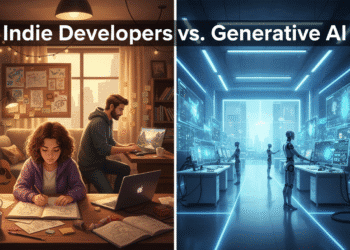The Real Cost of AI: Breaking Down ChatGPT’s Environmental Impact

OpenAI CEO Sam Altman recently sparked fresh debate about artificial intelligence’s environmental footprint by revealing specific figures about ChatGPT’s resource consumption. His claims paint a picture of minimal impact per query, but the numbers tell a more complex story when viewed at scale.
What Does Each ChatGPT Query Actually Cost?
In a blog post published Tuesday, Altman addressed growing public curiosity about AI’s environmental demands. He claimed that an average ChatGPT query uses approximately 0.34 watt-hours of energy. To put this in perspective, he compared it to what an oven would consume “in a little over one second” or what a high-efficiency lightbulb would use “in a couple of minutes.”
The water usage figures are equally specific. Altman stated that each query consumes about 0.000085 gallons of water, which he described as “roughly one fifteenth of a teaspoon.” These numbers emerged as part of his broader vision for AI’s future, where he predicts “the cost of intelligence should eventually converge to near the cost of electricity.”
However, OpenAI hasn’t provided substantial proof or methodology behind these calculations. The lack of transparency raises questions about how these figures were determined and whether they account for the full infrastructure required to support ChatGPT’s operations.
The Scale Problem: When Small Numbers Become Big
While individual query costs might seem negligible, the cumulative impact tells a different story. ChatGPT boasted around 800 million weekly active users as of April 2025. Even conservative usage estimates reveal staggering totals.
If those users averaged just one daily query, the collective consumption would reach 272 megawatt-hours of energy and 68,000 gallons of water every day. That translates to approximately 25,200 hours of oven usage and 52.2 million teaspoons of water daily.
The math becomes more concerning with realistic usage patterns. Many users likely make five or ten queries per day. Factor in continued user growth, and the environmental impact multiplies exponentially. These calculations don’t even account for the energy required to train AI models or maintain the massive data centers that power them.
Industry-Wide Environmental Concerns

Altman’s disclosure comes amid mounting scrutiny of AI’s environmental costs. Researchers have forecast that AI could consume more power than Bitcoin mining by the end of 2025. This projection has raised alarms about the technology sector’s long-term sustainability.
Previous investigations have revealed varying consumption patterns. The Washington Post worked with researchers last year to determine that generating a 100-word email using GPT-4 required “a little more than 1 bottle” of water. Their findings also highlighted how water usage depends heavily on data center locations, as cooling requirements vary significantly based on local climate conditions.
The geographic factor adds another layer of complexity to environmental calculations. Data centers in hotter climates require more cooling, increasing both energy and water consumption. This variability makes it difficult to establish universal metrics for AI’s environmental impact.
The Transparency Challenge
Critics argue that the AI industry lacks sufficient transparency about its environmental costs. While Altman’s figures provide some insight, they represent just one company’s claims about one aspect of AI operations. The broader picture includes training new models, maintaining infrastructure, and supporting the entire ecosystem of AI development.
The absence of industry-wide standards for measuring and reporting environmental impact makes it challenging for consumers and policymakers to make informed decisions. Without comprehensive data, it’s difficult to assess whether AI companies are making genuine progress toward sustainability or simply managing public perception.
Some experts suggest that mandatory reporting requirements could help address this transparency gap. Such measures would force companies to disclose their environmental metrics using standardized methodologies, enabling more accurate comparisons and accountability.
Looking Beyond Individual Queries
Altman’s focus on per-query costs, while informative, may not capture the full environmental picture. The infrastructure required to support AI operations includes massive data centers, specialized hardware, and cooling systems that operate continuously, regardless of query volume.
Training large language models like GPT-4 requires enormous computational resources over extended periods. These one-time training costs, distributed across billions of future queries, represent a significant portion of AI’s environmental footprint that per-query metrics might not fully reflect.
Additionally, the rapid pace of AI development means companies frequently train new models and upgrade existing ones. This constant innovation cycle adds to the cumulative environmental cost in ways that individual query metrics don’t capture.
The Future of Sustainable AI
Despite current concerns, Altman expressed optimism about AI’s environmental trajectory. He suggested that abundant intelligence and energy in the 2030s could help solve many global challenges, including environmental ones. This vision assumes continued improvements in energy efficiency and the development of cleaner energy sources.
Some industry observers share this optimism, pointing to ongoing research into more efficient AI architectures and the increasing adoption of renewable energy by tech companies. However, critics argue that efficiency gains may be offset by the exponential growth in AI usage and complexity.
The debate reflects broader questions about technology’s role in addressing climate change. While AI could potentially help optimize energy systems and develop new solutions, its own environmental impact remains a significant concern that requires immediate attention.
What This Means for Users and Policymakers

For individual users, Altman’s figures suggest that casual ChatGPT usage has a relatively small environmental footprint. However, heavy users and businesses integrating AI into their operations should consider the cumulative impact of their usage patterns.
Policymakers face the challenge of balancing AI innovation with environmental protection. Some jurisdictions are already considering regulations that would require tech companies to disclose their environmental metrics and invest in sustainability measures.
The conversation about AI’s environmental impact is likely to intensify as the technology becomes more prevalent. Users, companies, and governments will need to work together to ensure that AI development proceeds in an environmentally responsible manner.
As AI continues to reshape industries and daily life, understanding its true environmental cost becomes increasingly important. While Altman’s transparency is a step forward, the industry needs more comprehensive reporting and accountability to address legitimate environmental concerns while fostering continued innovation.










Comments 1